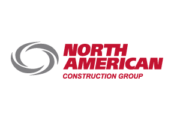North American Construction Group Saves $100,000 and Reduces Storage by 155 GB in its SharePoint 2010 Migration with DocAve ®
Success Highlights


Location Alberta, Canada
Industry Construction
Platform SharePoint 2010
Critical Needs
- An expedited migration from SharePoint 2007 to SharePoint 2010
- Reorganization of SharePoint content
- Automated migration job scheduling that could be scheduled during off-peak hours, limiting business disruption
- Full system, schedulable backup of SharePoint content
The Challenge
Recognized by Media Corp Canada as one of Alberta’s top 50 employers, NACG implemented Microsoft Office SharePoint Server (MOSS) 2007 for its wide network of knowledge-workers dispersed throughout various locations across the province. The company used the platform to set up a corporate intranet to keep employees apprised of the latest company news, store important information, and collaborate on projects. The platform became so popular within the company that its financial department even harnessed SharePoint to better facilitate its billing process.
NACG’s server farm currently consists of two web front end servers, two application servers, and one SQL server. Out of the company’s 5,500 total employees, NACG’s SharePoint environment has approximately 1,200 end-users.
When NACG’s MOSS 2007 environment was set up, there were problems with the overall architecture of the deployment. All SharePoint content was stored in one content database, and that database ultimately grew to hold more than 400 gigabytes (GB) of data. This far exceeded the Microsoft-suggested limit for SQL server and overall SharePoint optimization. Many sites contained documents with 90 versions. The finance department’s site alone contained more than 80 GB due to large amounts of versions of heavilyused spreadsheets. Additionally, NACG administrators were only able to perform full database backups with SharePoint’s native abilities. Since so much content was stored on the database, recovering a single lost document could potentially disrupt business for as long as long as three days.
When Senior Application Analyst Wendy Whitbeck took a job at NACG, she began to plan a migration to SharePoint 2010 for its new features and enhancements. She knew this could also provide the perfect opportunity to restructure NACG’s deployment and eliminate unwanted content to optimize the company’s SharePoint environment for all end-users.
Whitbeck initially investigated migrating with native abilities, but quickly found that restructuring and migrating select content would be much too labor and resource intensive for the company. A consultant was also brought in to assess the situation. “The consultant’s fees for performing a native migration would have cost the company more than $100,000,” Whitbeck said. “I knew then that migrating with native tools was simply not an option.”
With native migration a confirmed impossibility and enhanced backup and recovery tools a necessity, Whitbeck made plans to implement a third-party software solution.

Senior Application Analyst, North American Construction Group
The AvePoint Solution
Whitbeck’s previous company used AvePoint software on its SharePoint deployment, so Whitbeck was already familiar with AvePoint’s products and decided they were the best fit for NACG’s needs. AvePoint’s DocAve Software Platform integrates more than 30 independently deployable modules which function within a unified, browser-based interface and fully distributed architecture, but can also be purchased and deployed independently. “Working with DocAve at my previous job and never having any problems helped inform my decision to implement the software for NACG’s deployment,” Whitbeck said.
With DocAve SharePoint Migrator, administrators can perform full-fidelity content migration at the item, subsite, or site level. DocAve’s efficient and reliable data transfer is unique in its ability to migrate content while retaining all of the associated metadata. “Carrying out the migration with full fidelity and retaining all information about the company’s data was important to us,” Whitbeck said.
Just as NACG’s needs dictated, Whitbeck was able to plan a flexible, granular migration, using DocAve to reorganize the company’s deployment upon migration and cleaning up any clutter in the process. “With DocAve, I was able to reorganize the company’s single, giant site collection and turn it into eight different site collections that were better organized and easier for end-users to navigate,” Whitbeck said. “I was also able to set a rule that ensured no more than six versions of each document migrated, since documents with hundreds of versions were taking up too much space on the company’s database.“
Throughout the planning process, Whitbeck worked closely with AvePoint’s live global technical support team. “The help I got from AvePoint’s support team was awesome,” Whitbeck said. “Because restructuring can be such complex process, the support team helped me develop a sound plan for our migration.”
Once plans were set, DocAve's Pre-Migration Scanner provided Whitbeck with detailed analyses of the migration before it was performed, delivering an itemized report of all elements that would not migrate successfully unless addressed further. “DocAve provided me with a detailed analysis of the migration so I was able to work out any bugs before carrying out the job,” Whitbeck said.
Whitbeck was able to schedule the migration jobs according to NACG’s needs, primarily outside of business hours, typically beginning at 4 p.m. and running through the night. “Scheduling jobs according to business hours was extremely important,” Whitbeck said. “With so many end-users accessing SharePoint throughout the day, slowing our deployment or taking it offline was simply not an option. DocAve’s scheduler allowed me to set the migration job accordingly and forget about it.”
The migration of legacy content took four days. Once the legacy content was migrated, Whitbeck was able to run another migration with date parameters in order to carry over any content end-users created while the initial migration was taking place. In addition to upgrading NACG’s business-critical data to SharePoint 2010 and saving more than $100,000 in consultant fees, DocAve allowed Whitbeck to reorganize the company’s architecture and get rid of a large amount of excess data. “By the time the migration to SharePoint 2010 was finished, DocAve had allowed us to trim the company’s overall deployment from 425 GB to approximately 270 GB,” Whitbeck said.
In addition to DocAve Migrator, DocAve Backup and Restore addressed NACG’s need for a fast, flexible, and intelligent backup solution for Microsoft SharePoint. Whitbeck used DocAve’s convenient scheduler to run full system backups every day and receive emailed reports on the results. DocAve also allowed Whitbeck to perform restores to the site collection where content originally resided, or to a different site collection if needed. “We recently restored an item for an end-user with DocAve and it only took 15 minutes,” Whitbeck said.
The Road Ahead
In the world of SharePoint, it’s well known that no two migrations are alike. With a need to reorganize architecture, trim data, and migrate with as little business disruption as possible, NACG needed much more than native abilities could offer and found the ideal solution in DocAve.
Now that NACG’s SharePoint 2010 environment is up and running, DocAve will continue to play an important role in the company’s deployment beyond data protection. “We will soon begin to take advantage of DocAve Extender to optimize storage throughout our most data-heavy sites,” Whitbeck said.
